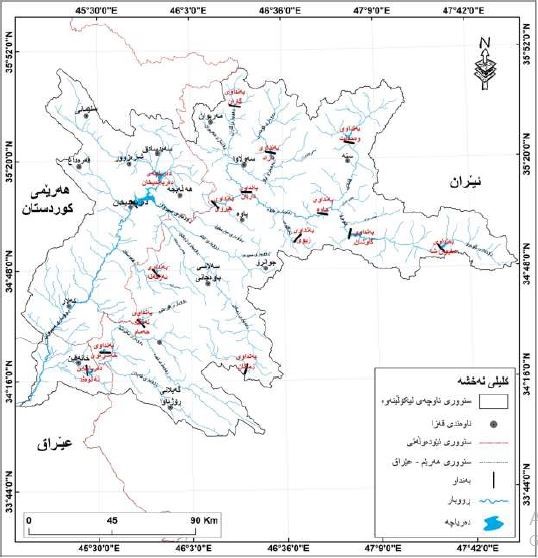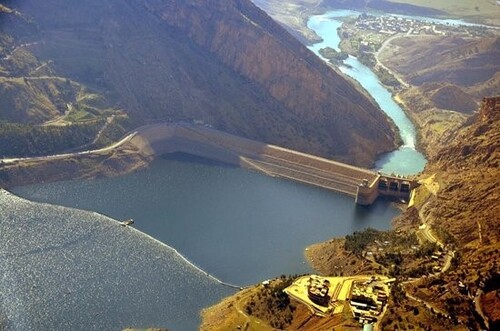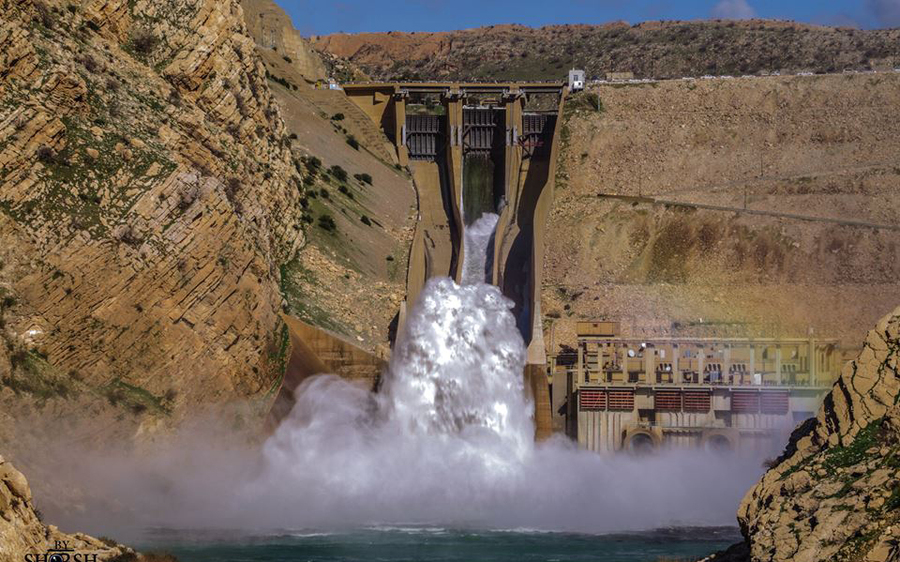"Biyara Plain, Sirwan's Water/ Are love songs and life lyrics". This is a part of a song called "Sirwan" which is one of the most famous Kurdish songs in the East part of Kurdistan. Apart from any other words of this song, what is interesting about it is that the Sirwan River flowing from Hawraman into Darbandikhan Dam has become a powerful symbol of unity of two parts of Kurdistan: The East and South parts of Kurdistan. Thus, this river is not only for the East part of Kurdistan especially the Hawraman region but also for the Southern part of Kurdistan brings life. it is interesting to note that since 2018, Sirwan has not flowed into Darbandikhan as before. But why? The answer lies in the colonialist policy of the Iranian government! Iraq's water sources mostly rely on those sources that come from out of Iraq, especially Iran and Turkey. In fact, the main water sources in Iraq are five great rivers from which 75% of this water is consumed as drinking water for people, in agriculture, industry, and economic related sections. Two of these rivers, Sirwan and small Zab, come from Iran and flow into the area, the Iranian state however, has limited the water flow into the southern part of Kurdistan in their vast project of collecting the border water that is common among the countries in the past two decades.
Map: Iran's dams on the small Zab River

Map: Iran's dams on the Sirwan River

The Islamic Republic of Iran has deployed water as a method to increase its influence on the Kurdistan Regional Government in Iraq. The Iranian government has built a series of dams on rivers that used to flow from the East part of Kurdistan into the plains in the South part of Kurdistan. In fact, there are now a series of Iranian dams on the "small Zab" and "Sirwan" rivers that provide water and electricity in Iran but limit the flow of water to the Kurdistan Region. One of them is the Daryan Dam on Sirwan River in Kermashan Province of Iran which will have a significant impact on the flow of water to Halabja province in the Kurdistan Region. Hundreds of villages on the way of the Sirwan River and in both Kalar and Halabja cities will face drought crisis. It has been for several years now that Darbandikhan Dam can scarcely provide enough water for agriculture. The main reason is the Daryan Dam.
Figure: Daryan Dam in Hawraman in the East part of Kurdistan

According to available information, due to the Daryan Dam which was completed in 2018, the flow of the Sirwan River to the Kurdistan Region has decreased by 60%. This affects hundreds of thousands of people in the provinces of Suleimani and Halabja. It is undeniable that the decrease in river flows is causing a drinking water crisis and has a major impact on the agricultural, hydroelectric, and fishing sectors in the Kurdistan Region. According to statistics, if water flow from Iran decreases further, more than 3200 hectares of agricultural land will be lost in Halabja, Said Sadiq, and Darbandikhan. The water crisis will force people to consume underground water that is not safe to drink which in turn can lead to health problems and an increase in diseases.
Figure: The Darbandikhan Dam in the Kurdistan Region

The decline in agricultural production also puts food security in the Kurdistan Region at risk. The lack of water has forced farmers in the Southern part of Kurdistan to give up planting crops such as rice, tomatoes, and watermelon and stop fish farming which requires a lot of water to produce. This leads to food insecurity in Iraq and the Kurdistan Region and has made the region more economically dependent on importing these supplies from Iran. In recent years, the Kurdistan Regional Government (KRG) and all the people of Halabja province including the political parties and NGOs have protested against the construction of the Daryan Dam in Iran. The concerns are also related to the sad memory that the city of Halabja which was chemically attacked in 1988 during Saddam Hussein's regime, the removal of the Sirwan River on Darbandikhan will be another humanitarian crisis for the city's residents.
Therefore, Iran's dam construction project in Kurdistan not only has created a negative environmental, economic, and social impact on the East part of Kurdistan but also has been used as a weapon against the Southern part of Kurdistan by reducing the water flow to the Kurdistan Region.









